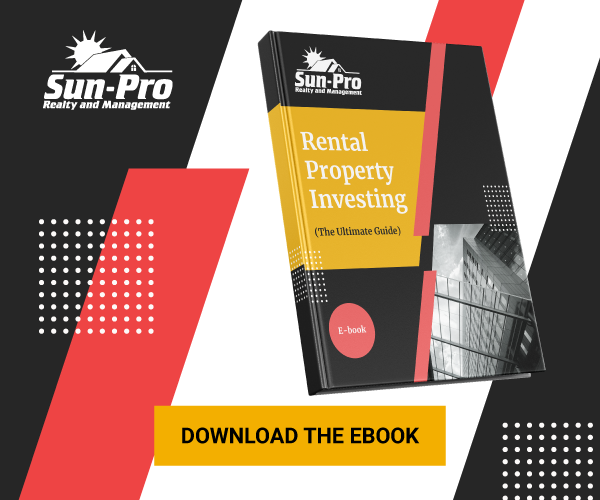
Are you preparing to rent out a property? Staying competitive in the market requires you to make vital decisions about to present your property to prospective tenants.
When renting out your property, there are a few key questions you should ask yourself before starting the process. One of these questions is whether or not you want to rent your house furnished. The answer depends on many factors like location, availability of furniture, local laws and regulations, and demand for short-term rentals versus long-term ones.
If you're unsure and need guidance on this critical topic, continue reading. In this blog post, we at Sun-Pro Realty and Management will share why furnishing a property for a rental might be advantageous so that when it comes time for decisions, you'll know what works best for your situation.
What Is a Furnished Rental?
A furnished rental is a residential property fully stocked with furniture, decor, and other essentials for tenants. These rentals are perfect for short-term stays, such as vacations or business trips, since all the basics are already provided. Furnished homes can also be ideal for people who want to try out a new city or neighborhood before committing to living there long-term.
The cost of a furnished rental depends on the type of property, location, and amenities included. Typically, these rentals are more expensive than unfurnished properties since all the furnishings are provided.

Should You Furnish the Rental Home?
There are many things to consider when deciding if a furnished rental property is a suitable investment for you. Some of the key considerations include the following:
Is There a Demand for Furnished Rentals in Your Area?
When considering if your house is suitable to be marketed as a furnished rental, one of the most critical questions is whether or not there is demand for such properties in your area. You'll want to research what similar properties in your area are charging for rent and what amenities are offered to ensure you can earn an appropriate return on the investment.
Are Tenants Interested in a Furnished Apartment in Your Area?
In addition to the demand for furnished rentals, you'll want to assess whether or not tenants are interested in renting such an apartment. You can do this by surveying your target audience and seeing what they seek when searching for rental properties.
If it’s students, a professional working on short-term contracts, or tourists, there might be more demand for furnished properties. This will also give you a better idea of what amenities to include and how much rent to set.

What Amenities Should Be on Your Checklist?
To make your furnished rental attractive to potential tenants, you must provide the right amenities. This includes furniture, appliances, linens, kitchen items, and other necessary items to make the rental more comfortable. Additionally, consider whether or not to have Wi-Fi, cable/ satellite television access, and other modern amenities that can help you attract quality tenants.
Benefits of a Furnished Home
Following are some of the benefits of renting a furnished home:
You Can Ask for Higher Rent
Furnished rental properties provide an excellent way for landlords to maximize ROI. Not only do they generate higher rent than unfurnished units, but it’s also easier to target the short-term rental market.
Tenants Save Costs and Time
Tenants save costs and time by not purchasing furniture and other home goods when moving into the new space. They also have to worry about paying for a moving company to help bring in their larger items.
Less Wear and Tear
There’s less wear and tear on the rental property because tenants are consistently moving large pieces of furniture in and out of the unit. Your property won’t have as many scratches on the walls and floors and marks on the wall either.
You Can Move Furnishings around When the Lease Ends
Also, landlords can move furnishings around between leases, making updating the look of the rental unit easier.
The Cost of Goods Are Tax-Deductible
Many furnishings are also tax-deductible for landlords, providing a financial incentive to furnish rental units.

Shorter Leases Provide Flexibility
Generally, furnished units attract short-term tenants. Shorter leases provide flexibility for landlords and tenants, allowing either party to end the lease agreement with less notice.
Drawbacks of Furnished Home
Furnished rental properties can be attractive for tenants and landlords, but they have drawbacks. Consider the followings:
- They’re more expensive for tenants - Furnished rentals are typically more expensive than unfurnished rentals due to the cost of providing furnishings in the first place. When setting the rent price, ensure that it’s fair and competitive.
- Furnished rentals have high turnover - Since many renters only stay in furnished units for short-term leases, there tends to be a higher turnover, which can mean additional costs for landlords.
- Higher potential for damages - Due to frequent use of the furnishings, there is more potential for damages from renting out fully furnished spaces resulting in repair or replacement costs that the landlord must incur.
For these reasons, it's essential to consider whether furnished rental properties are the right choice for you. While they can be excellent for tenants who want to bring only some or none of their furniture, landlords must weigh the potential costs when deciding what kind of rental property will best meet their needs.
Bottom Line
It's essential to consider the advantages and disadvantages of furnished rental properties. Although they’re more expensive, renters can benefit from having furniture in their rental package and more flexible leases.
However, landlords must consider the higher turnover rate and potential for damages when deciding which type of rental best fits their needs. Ultimately it’s up to each landlord’s preference and budget to determine what works best for them and their tenants.
If you need assistance managing your property, don't hesitate to contact Sun-Pro Realty and Management today!
